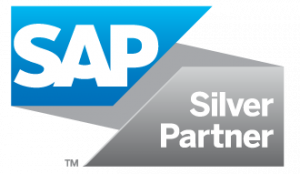SAP Web Service Connection: Configuration of an External Web Service Consumer
The integration of external web services into SAP enables a seamless connection to third-party applications – an essential component of modern IT landscapes. At munich enterprise software, we rely on stable and traceable configurations within the SAP NetWeaver stack, especially from version 7.0 SP14 onwards. In this blog post, we explain the most important steps and transactions for setting up a consumer proxy in the SAP system.
Table of Contents

Basics of web service connection
When an external web service is consumed, integration is usually carried out in SAP via a so-called consumer proxy class. This class is generated on the basis of a WSDL file and describes the interface to the web service.
WSDL stands for “Web Services Description Language”. It is an XML-based format that describes the technical details of a web service—such as available functions, data formats, call parameters, and the URL of the endpoint. The WSDL is essential for SAP because it forms the basis for the automatic generation of the proxy class and ensures that communication with the external service is correct.
Creation of the consumer proxy class (SE80 or SPROXY)
In the first step, we import the WSDL file via the Enterprise Services Browser, e.g. with the transaction SPROXY. This transaction is used to display and maintain Enterprise Services and enables the generation of the proxy class for the Web service.
Definition of the HTTP destination (transaction SM59)
In transaction SM59 , an HTTP connection to external servers (type G) is created. Here we define:
- URL of the web service (e.g. https://api.extern.de/service)
- The port used (e.g. standard port 443 for HTTPS)
- optional: authentication and header parameters
This destination will later serve as the destination address for the web service call.
Configuration in SOAMANAGER
The actual service configuration is done in SOAMANAGER (browser-based application). Here, a logical port is created based on the previously created proxy class. The logical port contains:
- Mapping to HTTP Destination from SM59
- Authentication and Timeout Settings
- Mapping to the Consumer Proxy Class
Important: The SOAMANAGER is a prerequisite for the service configuration from NetWeaver 7.0 SP14 onwards. Earlier releases use transaction LPCONFIG as an alternative.

SAP Web Service Consumer
How do I update a service consumer in SAP?
Updating Consumer Proxy in SAP – Example: OcrService
Step 1: Call up the transaction SPROXY
Start transaction SPROXY. In the structure tree, navigate to Enterprise Services → Client Proxies and select the Consumer Proxy OcrService .
Step 2: Select Proxy
Click on OcrService in the tree. The right detail view displays information about the structure and status.
Step 3: Check WSDL
In the menu, go to Proxy → Check → Check against WSDL/Schema. Load the updated WSDL file or reference a new URL to make sure the proxy matches the current interface. To get the WSDL file for a web service, call the service with the suffix ?wsdl, for example https://peppol.munich-enterprise.com/MailCenterOCR/OcrService.svc?wsdl.
Step 4: Regenerate Proxy
Right-click on the Consumer Proxy OcrService and select Regenerate Proxy. The system recreates the proxy according to the new WSDL structure.
Step 5: Assign a transport order
If you are working in a customizing or development system, the updated proxy is automatically assigned to a transport request. Make sure that the order is stored and transported correctly.
Step 6: Check and test bugs
Check for error messages when generating. If necessary, calling programs will have to be adapted, especially in the event of structural changes to the WSDL (e.g. new mandatory fields).
Additional note: If there are any changes to endpoints or authentication, also update the configuration in the transaction SOAMANAGER.

Update SAP Sproxy Service Consumer WSDL
Special features & tips
- The default port (80 for HTTP, 443 for HTTPS) must be open in the network environment.
- Use test tools in SOAMANAGER to test the service before going live.
- Transaction SRT_UTIL is used for technical analysis of Web service messages and provides diagnostic tools for error detection.
- SRT_MONI can be used to monitor web service calls and analyze their status, payload, and errors.
Result
The configuration of an external web service consumer in the SAP NetWeaver Stack is clearly structured if the procedure is correct. With the transactions SM59, SOAMANAGER, SPROXY and, if necessary, LPCONFIG as well as the targeted use of proxy classes, logical ports and HTTP destinations, a stable and maintainable integration is achieved.




